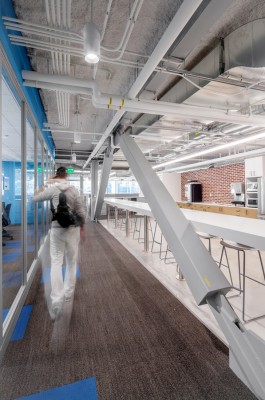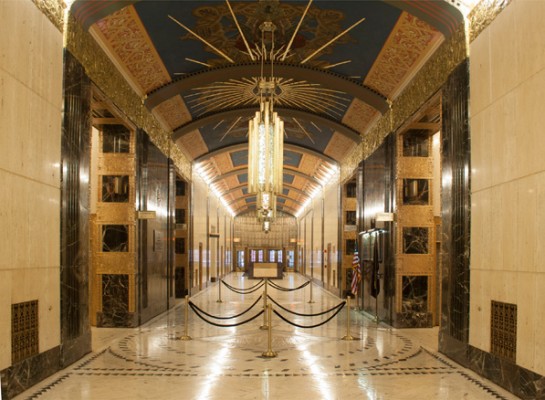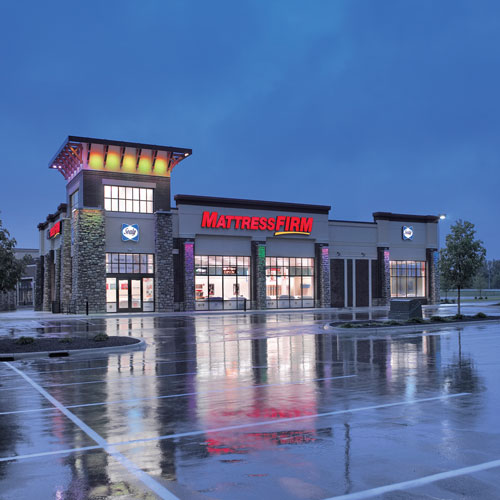Up and down the east coast, Verizon Communications is breathing new life into buildings that, for decades, served as the lifeblood of the telecommunication giant’s phone system. Verizon has partnered with developers to create apartments, co-work, and other office and administrative spaces that maximize use of the buildings as technological advances reduce the space needed to house network infrastructure.

—John Vazquez, Senior VP of Real Estate
It’s just one of the many projects John Vazquez is working on in an effort to increase the company’s space productivity, consolidate operations, and eliminate unnecessary square footage. As Verizon’s senior vice president of real estate, Vazquez manages more than 5,000 buildings and 100 million square feet of properties. He’s responsible for workplace design, leasing, property management, amenity services, design and construction, strategic planning, and asset management.
“Our biggest challenge has been, how do you make sure you’re utilizing your footprint appropriately? How can we best optimize the assets we have?” he says. “Our focus for the past three years has been a productivity focus based on utilization.” The result of that focus is Verizon eliminating 10 million square feet of space it didn’t need.
As Verizon has grown and expanded its communications portfolio over the years to offer broadband, TV, wireless, and other communications and entertainment services, shedding underutilized technical space poses a unique challenge. As modern telecommunications infrastructure migrates to fiber optics, away from copper wire, and from mechanical switches to digital ones, Verizon expects to be able to reduce its technical footprint by as much as 80 percent where it makes these conversions, according to Vazquez.

He’s leading the charge to repurpose historic telephone buildings into residential apartments, retail space, offices, and co-work locations. He’s taken several buildings, particularly in Manhattan and other city centers, and sold 40 to 60 percent of each building to developers. Verizon continues to operate its communications infrastructure in the remaining portion of the building.
“For us, it’s about taking these assets that were built for one use and finding another use so that it actually adds value… back to the communities,” Vazquez says. For example, 140 West St., located next to the World Trade Center in downtown Manhattan, is being converted to more than 200 residential units.
Instead of aging into liabilities, these buildings are instead viewed as gems that contribute to urban revitalization while preserving their character. Several of them are landmarks.
“Especially with the migration of millennials, and even retirees, to live in an urban setting and be in city centers, we now find we have properties that are in great locations where people actually want to live, which really was unheard of even 20 years ago,” Vazquez says.
Verizon predecessor Bell Atlantic and other telephone-only companies constructed the buildings in the early 1900s to house copper wire, switches, operators, and even a place to pay phone bills. Now, hundreds call it home, he says. The residential space also uses less energy than the industrial environment. “It’s a clear win-win,” Vazquez says.
In another unique initiative, Verizon also has announced that it would open up co-working space at the very same landmark building on West Street for small startup companies, entrepreneurs and new ventures looking for space to open their doors for business.

In the first-of-its-kind real-estate strategy, and a first for the telecom industry, the company will take between 10,000 and 12,000 square feet of underutilized space at its iconic lower Manhattan building and retrofit that unused space for use as business incubators, inviting in new businesses to set up shop as they expand and grow.
Verizon also is shrinking its administrative footprint; it went from more than 350 office buildings in the United States to about 240 in the past year, according to Vazquez.
“All of that is based upon our transforming the workplace into a … vibrant work environment,” he says. The company is moving away from workstation cubicles of the 1970s and ‘80s into open benching systems. Verizon redesigned many of its workplaces akin to those of Google, Yahoo, Facebook, and other tech employers. By moving operations around into the right labor markets for talent and making changes with existing operations, the company has driven its office building utilization from less than 35 percent to 65 percent, with a goal of 85 percent.
“We think we’ve really focused our workplace based upon how people work, how they need to work,” Vazquez says. “We’ve looked at how millennials like to work. As a company of our age, we have multiple generations in the workplace, with sometimes very different work styles.”
While some employees still use assigned office space, the company also offers flexible workspaces with the concept of free address. In these environments, employees can either use an online system to reserve a spot ahead of time or show up and pick a spot ad-hoc.
Verizon also has reduced the number of garage work centers where its technicians report on a daily basis from about 500 to 400, primarily in the northeast, mid-Atlantic states, California, Texas, and Florida. The company analyzes where its technicians get dispatched and consolidates in a manner that reduces technicians’ travel time and fuel consumption. This is a location strategy play where technicians are brought closer to where the work is.


